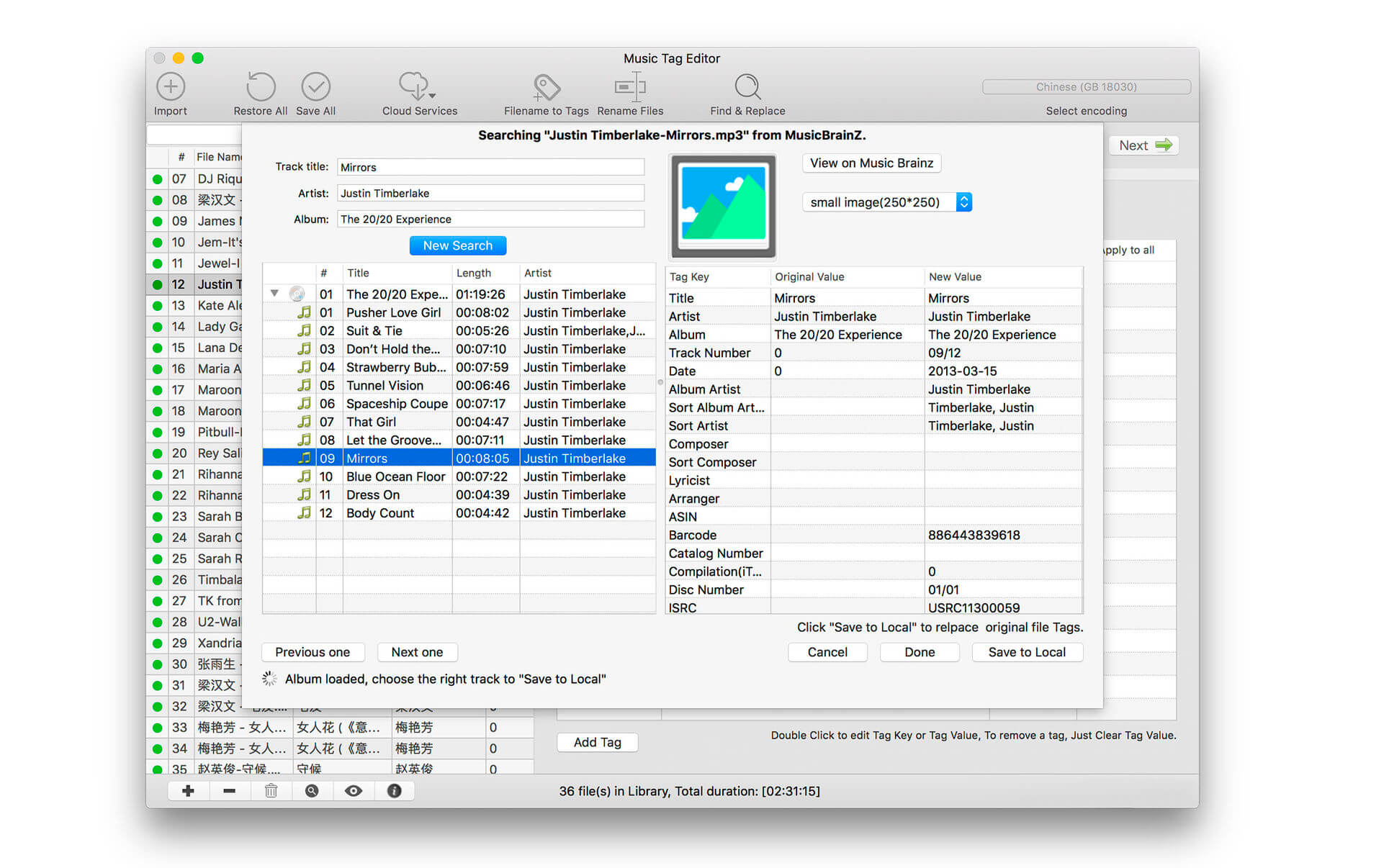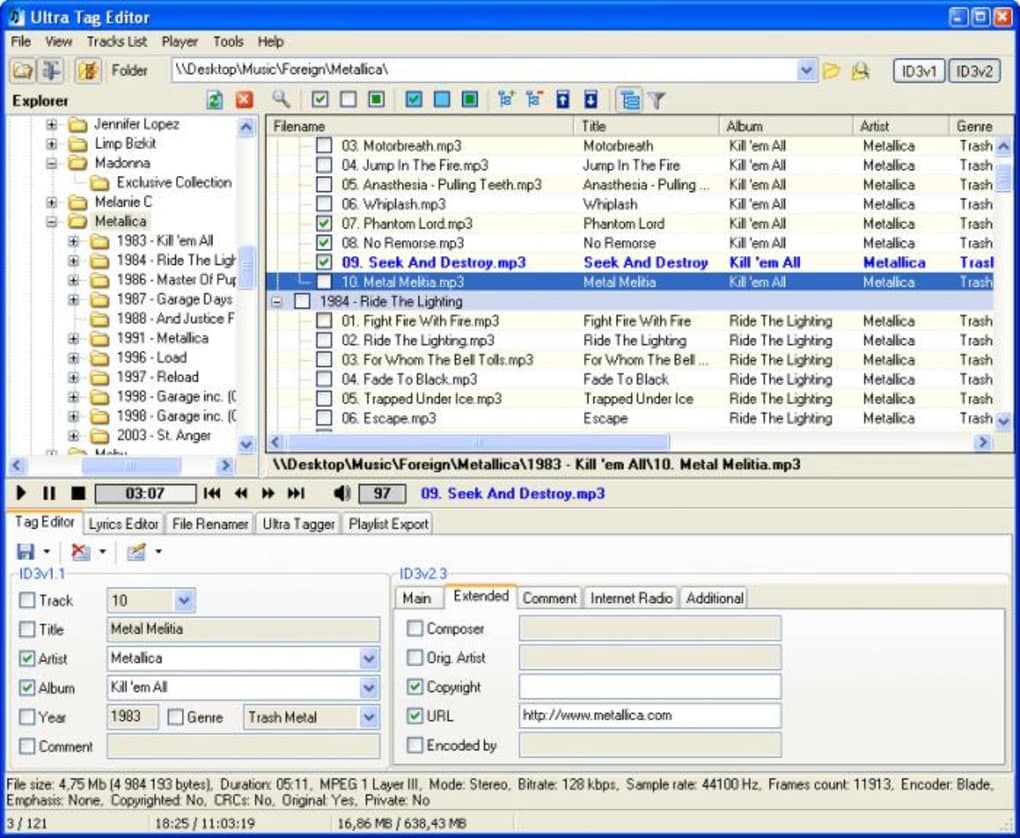TagScanner is a free batch mp3 tag editor software for Windows. Using this software, you can easily add or modify metadata of multiple MP3 files at a time. Apart from with MP3, you can also edit metadata of OGG, FLAC, WMA, Opus, Speex, AIFF, WAV, etc. You can add tags to resources when you create the resource. Imvu 534 4 mac. You can use the resource's service console or API to add, change, or remove those tags one resource at a time. To add tags to—or edit or delete tags of—multiple resources at once, use Tag Editor.
- TigoTago - tag editor. TigoTago ® is a spreadsheet-based tag editor for media files. This enables you to easily set and modify tags and to rename a huge number of files. Convenient multi-selection allows for flexible mass taging and mass renaming operations. You have full control - all changes are visible before you save them to disk.
- Tag editor is a simple and easy-to-use tool to edit tags of MP3 files. And also this is a freeware. This tool allows you to edit following tags of MP3 files, Title Artist Album Year Genre Disc.

TigoTago - tag editor
TigoTago ® is a spreadsheet-based tag editor for media files. This enables you to easily set and modify tags and to rename a huge number of files. Free train simulator games for windows 10. Convenient multi-selection allows for flexible mass taging and mass renaming operations. Sims 4 mac crack reddit. You have full control - all changes are visible before you save them to disk. No typing will be needed when filling tags, since they can by imported from freedb or Discogs on-line databases.

Feedback
 Questions, bugs, observations post on info@tigotago.com
Questions, bugs, observations post on info@tigotago.com System requirements

- Windows XP, Windows Vista, Windows 7, Windows 8, 32bit or 64bit
- .NET Framework 2.0
Tag Editor
[00:00] Ignition 8 comes with a new interface for working with tags. In this video, we'll be walking through the layout and basic features of this interface. To start, we'll come over to our tag browser in the designer here and we'll see that I have a couple tags configured already. Now, let's say I wanted to edit one of my existing tags. Doing this is very simple, I can simply right-click on my tag and select edit tag. I could also double-click on the tag directly, might be a bit faster. So, for example, if I canceled out of this and then double-clicked on my tag, the tag editor would again come up. And however we'd like to do it, the end result is that we pull up the tag editor for our tag. From here, we're provided a full list of the configurable properties of our tag. And just to start out, we have basic properties that control, for example, the name of our tag or what tag group it's in. We also have value properties. The kinds of value properties we're provided will vary based on the type of our tag.
[01:02] So just to demonstrate, I have a memory tag selected here, but if I cancel and double-click on my OPC tag here, we can see that now we have an OPC server property and an OPC item path property. Next we have numeric properties, these deal with things like scaling or engineering units we'd like to use for our tag. And then scrolling down a little bit, we have meta data properties, these give us the opportunity to describe our tag in ways that will help other users and developers of our project. You can see, for example, that I've already configured documentation on this tag and it's already being displayed when we open up the tag editor. From the tag editor, we can also configure security, scripting, alarms or tag history. I'd also like to mention that there's a taskbar up above. From here we can, for example, rearrange our properties alphabetically or by category, which is the default. I can also collapse or expand the categories. And finally, the little plus icon here gives us the opportunity to configure a custom property on our tag.
Tag Editor
[00:00] [02:05] Now you might have noticed I've already configured a custom property if I scroll down here. You can see under the custom category, I've created a property called My Custom Property. Now, I can select this property and delete it using the trashcan icon. I'm going to click yes, and again, to create properties, I'll click the plus icon, I just need to give it a name, New Property's fine and a type, so I'll make mine an array. And I'll click okay and if I scroll down again, we can see that my new property is here. So, just a couple more useful features in the tag editor I'd like to discuss. We have a refresh button up here that allows us to pull in any changes made to this tag from another designer. Also, down below we can see that by default, we're showing documentation for this tag, as specified on the documentation property. But if I'd like, I could also see some tag diagnostics here. And you can see, we're just provided with some information about our tag, since it's an OPC tag, we're also getting some OPC information as well. So, that about covers everything there is to know about the new tag editor, I'm just going to click okay. So, that about wraps up how we can interact with tag properties in the designer. In future videos, we'll dig a bit deeper into how to configure specific tag properties.
